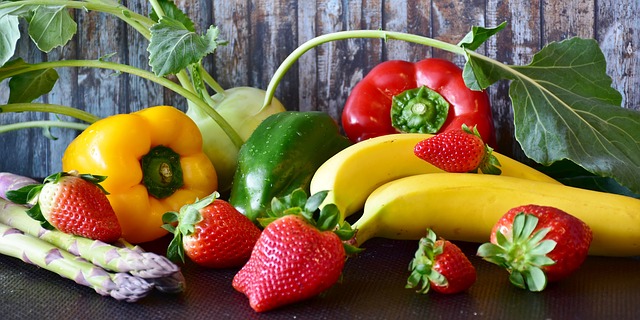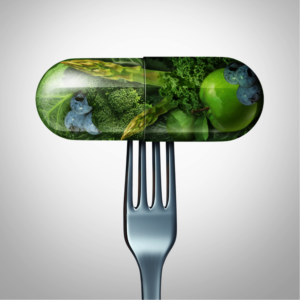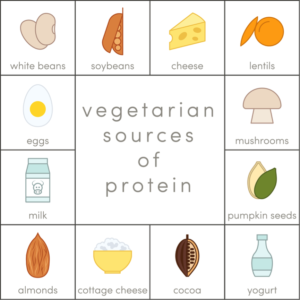
– Jan Dunn, Dance Wellness Editor
by Derrick Brown, M.Sc.
Is it just a hype?
Click, zoom in, swipe up, left, or right on any social media platform and eventually you will come across someone extolling the dangers of meat and touting the virtues of a plant-based diets. At first glance you might believe that the entire world has gone ‘green’. However in a study published recently (see below) that researched 334 dancers from 53 countries, we can see that of those who opt for plant based diet, only a minority are emerging when compared to those who also consume animal products. Vegetarianism provides a catchall term for a variety of diets, which exclude the consumption of some, or all-animal products.

Contrary to popular claims, appropriately designed and managed vegetarian diets contain foods nutritionally sufficient for health, well–being and physical performance. Vegetarian dancers can meet their protein needs from primarily or exclusively (vegan) plant-based sources when a variety of these foods are consumed daily and energy intake is adequate.

However, the quality and timing of dietary intake is of key importance to meet the physical demands typical of high intensity, intermittent types of dance styles. Poorly planned, calorically restrictive and nutrient poor diets confer a host of deficiencies that diminish health and ultimately performance.
The current recommendations for dancers’ diets are:
– 55 % carbohydrate
-20–30% fat
-12–15% protein.
This recommendation is based on an omnivorous diet and is an acceptable start point for all dancers across different dance styles. Below are some simple examples that may aid dancers who opt for partially or all plant-based diets.
High-quality carbohydrates are the way to go.
We currently live in a love hate relationship with sugar. Either you love it, love to hate it, or hate that you love it! But for the dancing performing body, sugar is your friend. Carbohydrates are the primary source of fuel for the dancing body. Carbs are in multiple food sources, fruits, veg, bread, pasta, rice etc. All, (yes all) carbs are converted into simple sugars that the body can use for energy. There are differences – however, there is no reason to fear carbs if you see them as fueling you for dancing. A quick way to categorise carbs is fresh versus pre-prepared. Eat pre-prepared carbohydrates at a minimum of 1-2 meals in your day. Popular prepared options include rice, millet, quinoa, whole wheat breads and pastas, and oatmeal.

Fresh carbs; fruits and veggies.
Vegetables are a great way to get lots of nutrition in often small portions of food. As a rule of thumb, there are no bad fresh veggies – only the timing of consumption is key. For example white potatoes, long touted as bad for you, are excellent when you need a quick sugar and you have little time to eat. Combine a lean protein (more later) with a white potato cooked in a variety of ways – and you have a nutritious meal! Excellent fresh carbs include dark greens, carrots, cucumbers, sweet potatoes, broccoli or cauliflower, and celery. In the fruit area some healthy choices include blueberries / most berries, bananas, apples, and pears.
Eat plenty of lean proteins.
For vegetarians and vegans, beans, legumes and grains have the added benefit of containing both carbs and protein in varying quantities. When beans and legumes are combined (for example chick peas with brown rice), they provide a more complete source of protein than when eaten alone. Soy products (tofu, tempeh) are obvious choices for complete protein sources in a vegan diet, while in a vegetarian diet one can opt for the added benefit of dairy or eggs. If you are living in North America, there are a host of pre-packaged products designed to offer not only convenience but also high protein to the vegetarians and vegans. In other countries one must work harder or devote some quality time to cooking delicious proteins from scratch. Protein powders are a popular alternative for those on the go! Vegan sources like hemp, rice and pea are popular amongst vegan athletes and performing artists.

Seeds and Nuts; chock full of good fats. Fat used to have a bad reputation as causing one to get, well, fat. We now know this is not so simple. In the plant-based diet, particularly for dancers, fat can offer a sustainable source of energy over longer periods, and when the body is under stress. Nuts like legumes and whole grains are also combo foods hosting a large source of both protein and fats. So, nut-butters; almond, cashew, hazelnut offer both protein and fat. The great thing about seeds is that they are where most plant life comes from! So seeds must contain the necessary amounts of both fats and proteins to help a plant grow. Sunflowers can’t grow without the protein and fat!
Drink plenty of water. There are many people who do not like the taste of, and thus do not drink water! Many dancers don’t drink water because of a fear of needing to run to the bathroom during class, or worse because they fear the dreaded water bloat! However, when your heart rate rises, which it will eventually at some point during your dancing day, you will sweat. Sweating is the body’s way of cooling off, and the only way to re-balance the minerals lost in sweat is through drinking – preferably water. So, learning to drink water at a strategic time in the day keeps you hydrated and replenishes key minerals like sodium that are lost when sweating.
Every person will have different water needs. However, after a workout and at the end of the day you should take time to drink fresh water. If you know you will have a particularly heavy class or rehearsal, monitor your body and observe how long it takes you between the time you drink and when you need to go to the bathroom. The common misconception is that when you drink water and then immediately run to bathroom, that you pee out what you just drank. That is not completely true…meaning that when you drink regularly, your kidneys will create more urine than usual. If you are getting at least 8 full glasses of water in a day you should not need more than that, unless of course you are dancing on an outdoor stage or at dance camp dancing outdoors for hours at a time. Most of us take about 45m to an hour before we have to urinate, so organise your water intake before class or rehearsal so you can time your intake to coincide with the end of barre in ballet or after a run-through in rehearsal. Plant-based diets that contain ample fresh foods have the advantage of containing lots of hydrated food sources (grapes, celery, cucumber etc). Be aware that “8 glasses of water” a day means 8 glasses of liquids –this includes not only water, but also tea / coffee / juice, etc.
Sounds brilliant, however there are some ‘buts’.
As stated earlier, a well-designed vegetarian diet should provide the body with all that key nutrients needed for good health. Paradoxically, a poorly planned vegan diet can create a host of problems, some with unfortunate health consequences.
Vegetarians, in particular vegans, should ensure sufficient caloric and adequate intake of Vitamin B12, Vitamin D, ω-3 fatty acids, calcium, zinc, and selenium. Key sources for many of these micronutrients are derived from animal products; and with sufficient knowledge, obtained from plant-based sources.
However, the diminished bioavailability of iron from plants and lack of plant sources of vitamin B12 in vegan type diets can have detrimental effects on health, and on dance performance. Thus, to prevent long-term deficiencies, vegan dancers require more diligence when preparing and managing dietary intake long term.
Many who grew up being vegan will no doubt have had a blood test now and again. For those new to strict plant-based diets, an annual blood test from your health care provider is a good practice to have in your health routine. Many of the key micronutrients mentioned are ones that might show up as deficient, and you can take steps to supplement them either in additional foods or via supplements – advice that your doctor will provide. Also a registered dietitian with clinical experience can also provide sound advice.
Just remember that plant-based diets have been around for centuries. Vegetarians eat vegetables and lots of other foods. Humanitarians also eat vegetables, but thankfully they don’t eat humans! So relax, enjoy and enjoy your food whatever it may be.

Derrick Brown , M.Sc.(dist) is currently co-program manager and lecturer in dance science at the University of Bern, Institute for Sport Science, Bern Switzerland. In addition he also is a research fellow at the National Centre for the Performing Arts (the Netherlands) as well as guest lecturer in health at ArtEZ university of the Arts and the Coronel Institute of Occupational Health, People and Work- Academic Medical Center Amsterdam, both in the Netherlands. He obtained his M.Sc. in Dance Science with honours from the University of Wolverhampton U.K. and is a certified Sport/Performance Nutritionist (CISSN). Derrick has peer-reviewed for several international journals and is currently an editorial board member for the Journal of Dance Medicine & Science. He has (co)authored numerous peer-reviewed articles, book chapters and books on dance education and performance. Derrick is currently a doctoral candidate in his final year at Radboud University, Donders Institute for Brain, Cognition and Behaviour (the Netherlands) where his research crosses empirical theories in cognitive and experimental psychology with queries in dance performance research.
Prior to academia, he worked for thirty-five years professionally in the dance world, first as a dancer, teacher and rehearsal director. He danced with Peridance, Ballet Manhattan, Pretty Ugly Dance Company, Itzik Galili, and for 10 years with the Mark Morris Dance Group. He has taught ballet for classical and contemporary dancers in dance institutions and companies throughout the EU including Codarts University of the Arts, Amsterdam University of the Arts, Les Ballet de Monte-Carlo, Noord Nederlands Dans, Staatsoper Hannover, The Hessisches Staatstheater Wiesbaden, and Culberg Ballet.




